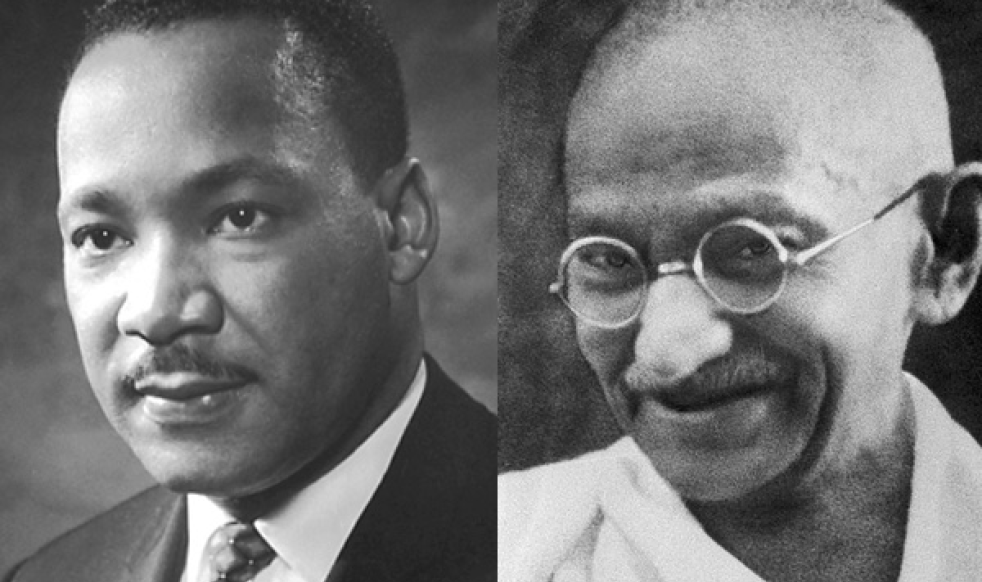Today (Jan 15, 2024) is Martin Luther King Jr. Day (MLK Day) in the United States. Martin Luther King Jr. Day is a federal holiday in the United States observed on the third Monday of January each year. MLK was the chief protagonist for nonviolent activism in the Civil Rights Movement in the United States, which protested racial discrimination in federal and state law.
One of the most significant and tangible effects India has had on life in the United States was Mahatma Gandhi’s influence on the Civil Rights leader, Martin Luther King, who adapted Gandhi’s idea of civil disobedience to the civil rights movement in the United States. Martin Luther King Jr. took inspiration from Mahatma Gandhi for nonviolent means to foster positive change in the society. The civil rights leader realized the power in Gandhi’s philosophy to stand up to oppression with the power of truth. Martin Luther King always paid tribute to Gandhi as one of the most important sources of his own values.
Though the two men never got a chance to meet, MLK learned about Gandhi through his writing and a trip to India in 1959. In fact, MLK was 19 years old when Gandhi was assassinated in 1948. To better understand Gandhian principles, King took a one-month trip to India at the beginning of 1959. There, he was pleasantly surprised to find that many people there had followed the nonviolent bus boycott that he had been a part of. During the trip, he met with Gandhi’s son, cousin, grandsons and other relatives and laid a wreath on his entombed ashes. And he left even more convinced of the power of nonviolent civil disobedience to affect social change.
MLK first learned of Gandhi’s concept of nonviolence as a seminary student. As a Christian, he connected the Hindu thinker’s words to the Biblical appeal of Jesus to “love your enemies and pray for those who persecute you.” Gandhi’s philosophy challenged the notion that being non-violent means being passive. Gandhi spent his entire life experimenting living with nonviolence to be not just morally correct, but also practically effective – to deal with day-to-day situations of life. When Mahatma Gandhi was working out his concept of non-violent resistance, he was impressed by Henry David Thoreau’s (famous naturalist from USA) advice to resist things that were wrong. Thoreau suggested that individuals could resist immoral government action by simply refusing to cooperate. Gandhi adopted many of Thoreau’s thoughts in developing his concept of Satyagraha (non-cooperation), or Truth Force. Through Thoreau and Gandhi and later Dr. Martin Luther King Jr., its fascinating how the idea of non-violence propagated from United States to India and back to United States again.
"To other countries, I may go as a tourist, but to India, I come as a pilgrim" - Dr. Martin Luther King, Jr.
“I came to see for the first time that the Christian doctrine of love operating through the Gandhian method of nonviolence was one of the most potent weapons available to oppressed people in their struggle for freedom,” King later wrote.
In his 1958 book Stride Toward Freedom: The Montgomery Story, Dr King laid out the principles of nonviolence he’d employed during the boycott. He affirmed that it is possible to resist evil without resorting to violence and to oppose evil itself without opposing the people committing evil. He also wrote that people who practice nonviolence must be willing to suffer without retaliation, internal or external: “The nonviolent resister not only refuses to shoot his opponent but he also refuses to hate him.”

Shortly after the Supreme Court ruled that Montgomery’s bus segregation was unconstitutional, King told a crowd in Brooklyn: “Christ showed us the way, and Gandhi in India showed it could work.”
The legacy of Dr. Martin Luther King Jr. encompasses influential decisions, monumental actions and steadfast progressions of humanitarian rights that reach far beyond the civil rights movement. A leader of all people, Dr. King never chose fear, but always chose courage and determination when fighting for civil rights in the face of oppression, ignorance, and violence. He refused to allow prison, violence or the threat of death sway his end mission. Instead, he stood beside his goal of achieving rights for all through nonviolent protests.
Dr. King maintained a vision for a more diverse America where all people enjoyed the benefits of equality. During a time when the opposition implemented legislation that withheld rights from people of color and expressed hatred through beatings and killings, Dr. King continued to take the high road.

 507 Views
507 Views 1 comment
1 comment
Jan 18, 2024, 6:52 am EST
I didn't know MLK had travelled to India...Thanks for informing us about this!